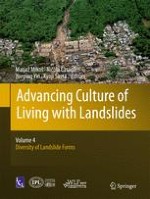2017 | OriginalPaper | Buchkapitel
Velocity Attenuation of Granular Debris Flows During Impact on Rigid Barriers
verfasst von : C. H. Raymond Koo, S. H. Julian Kwan, Carlos Lam, Wai-Keung Pun, W. W. Charles Ng, E. Clarence Choi
Erschienen in: Advancing Culture of Living with Landslides
Aktivieren Sie unsere intelligente Suche, um passende Fachinhalte oder Patente zu finden.
Wählen Sie Textabschnitte aus um mit Künstlicher Intelligenz passenden Patente zu finden. powered by
Markieren Sie Textabschnitte, um KI-gestützt weitere passende Inhalte zu finden. powered by
